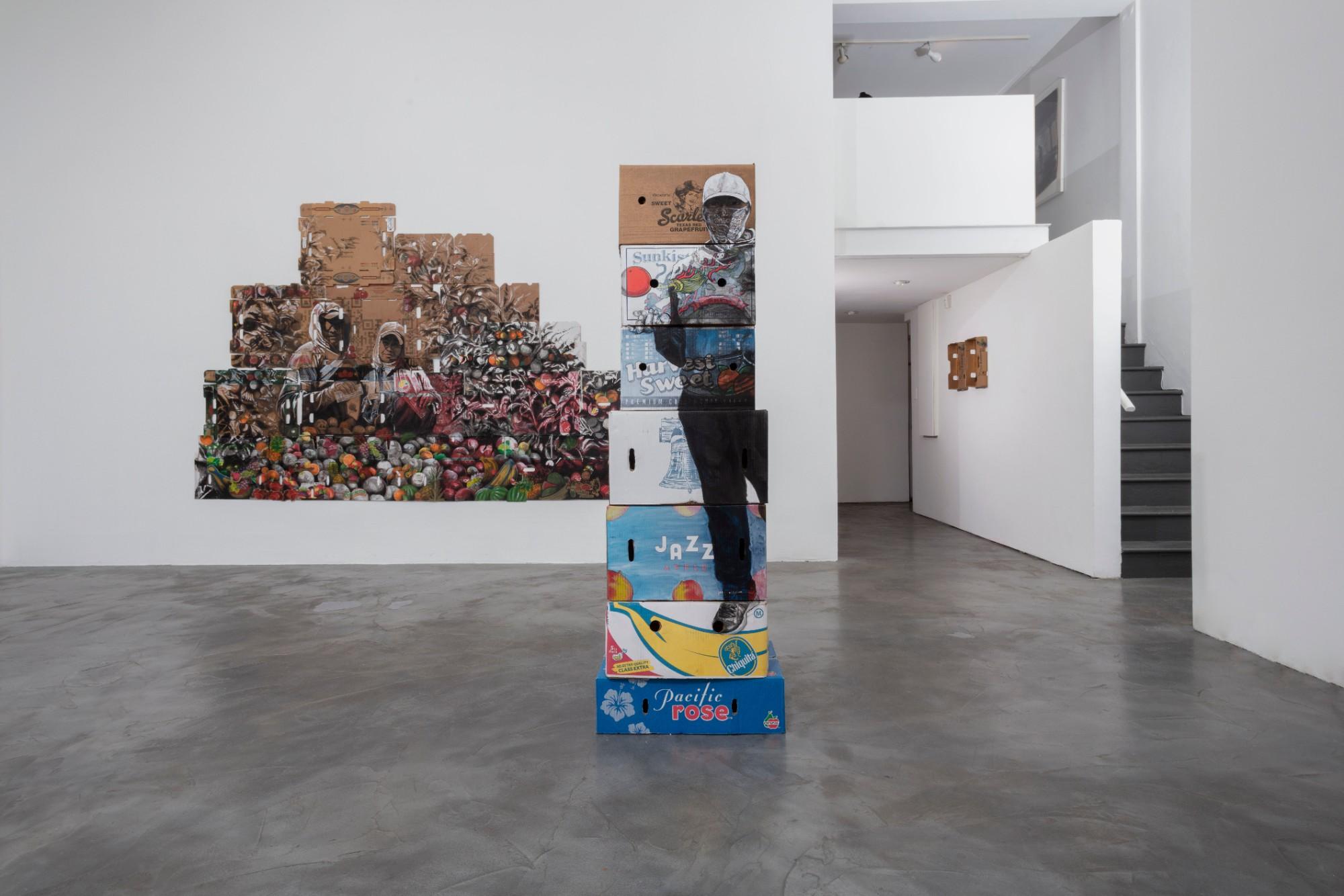Narsiso Martinez: Superfresh
Charlie James Gallery
Immigrating to the United States from Mexico when he was 20 years old, Narsiso Martinez attended a community adult school to earn his high school diploma while working at apple orchards in Washington State. Step by step he gained his Associate of Arts degree, a BFA, and finally his MFA from California State University Long Beach in 2018. Making drawings on cardboard produce boxes to commemorate the migrant experience and farm laborers for the past several years, Martinez presents a sensational selection of new works in Superfresh, his inaugural exhibition with the Charlie James Gallery.
































![DEl Kathryn Barton [Australian b. 1972] the more than human love , 2025 Acrylic on French linen 78 3/4 x 137 3/4 inches 200 x 350 cm Framed dimensions: 79 7/8 x 139 inches 203 x 353 cm](/sites/default/files/styles/image_5_column/public/ab15211bartonthe-more-human-lovelg.jpg?itok=wW_Qrve3)



